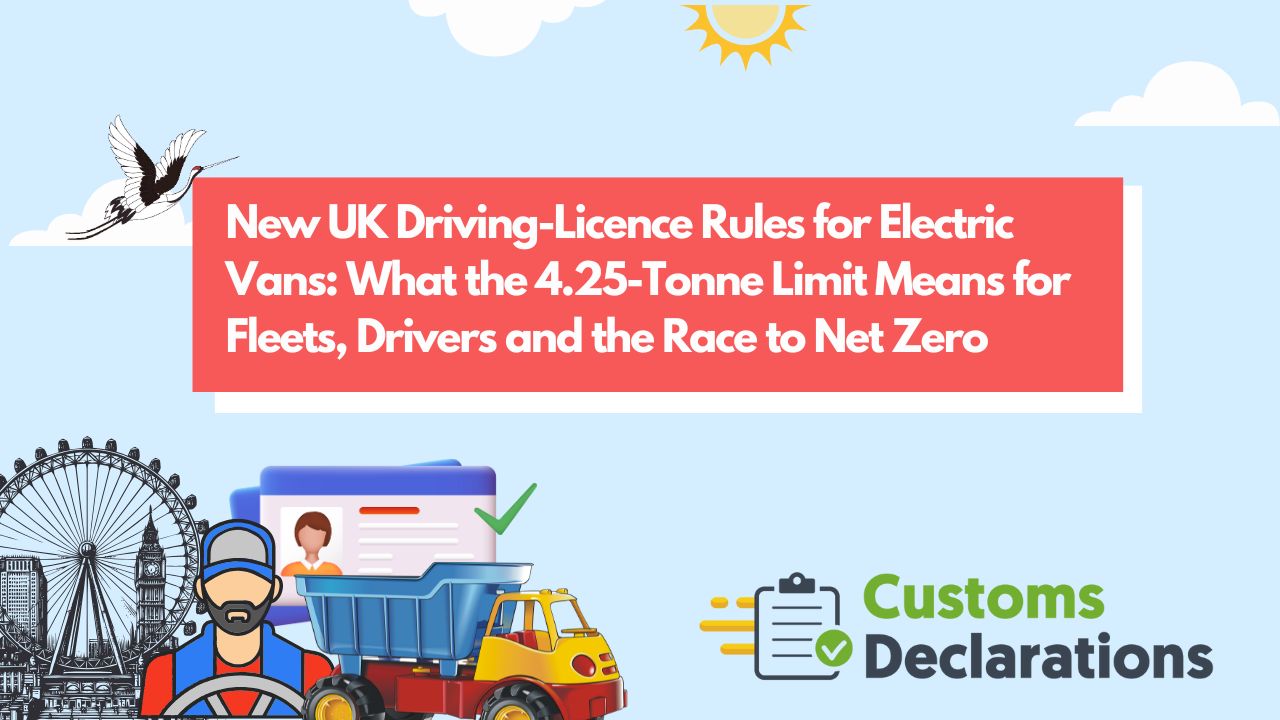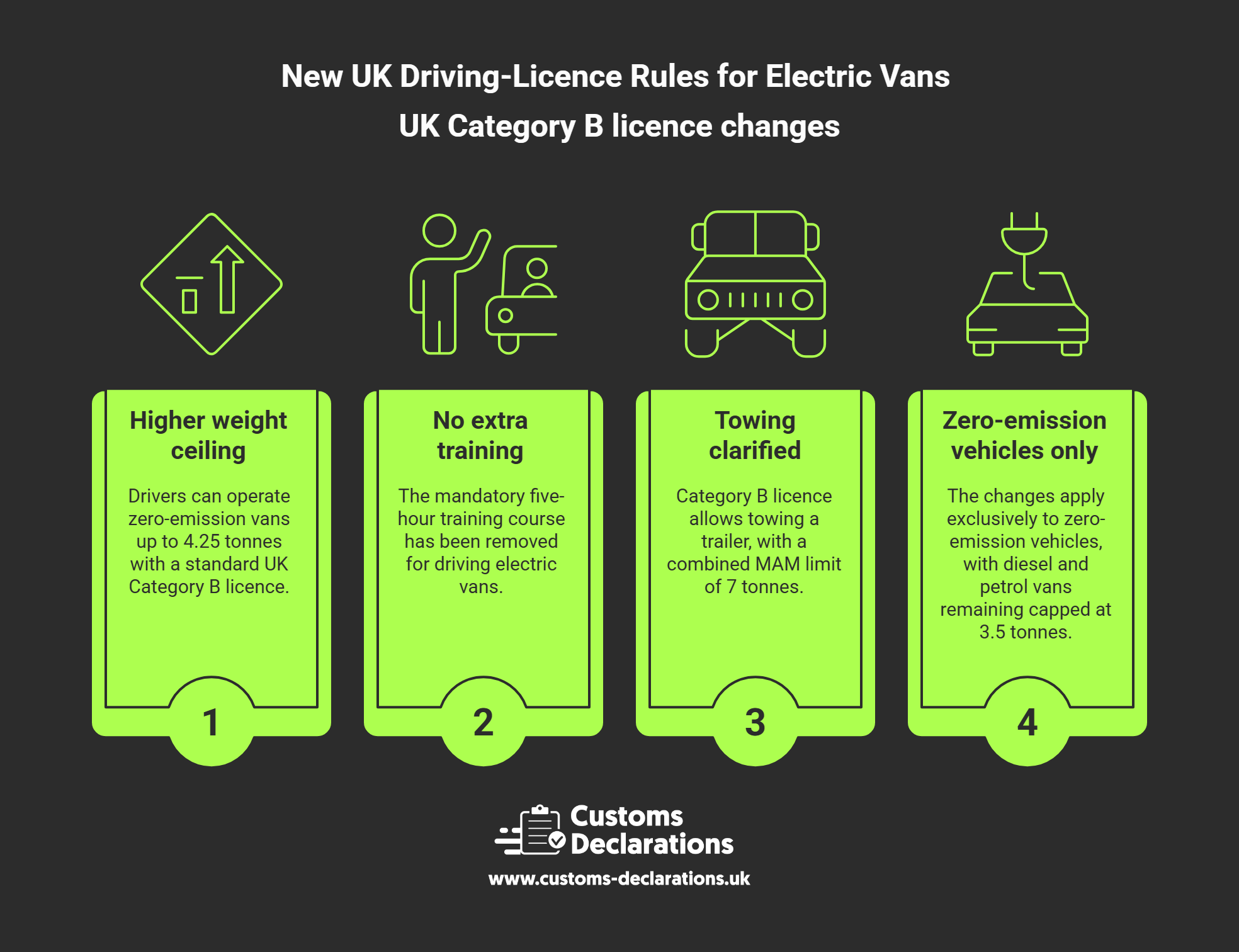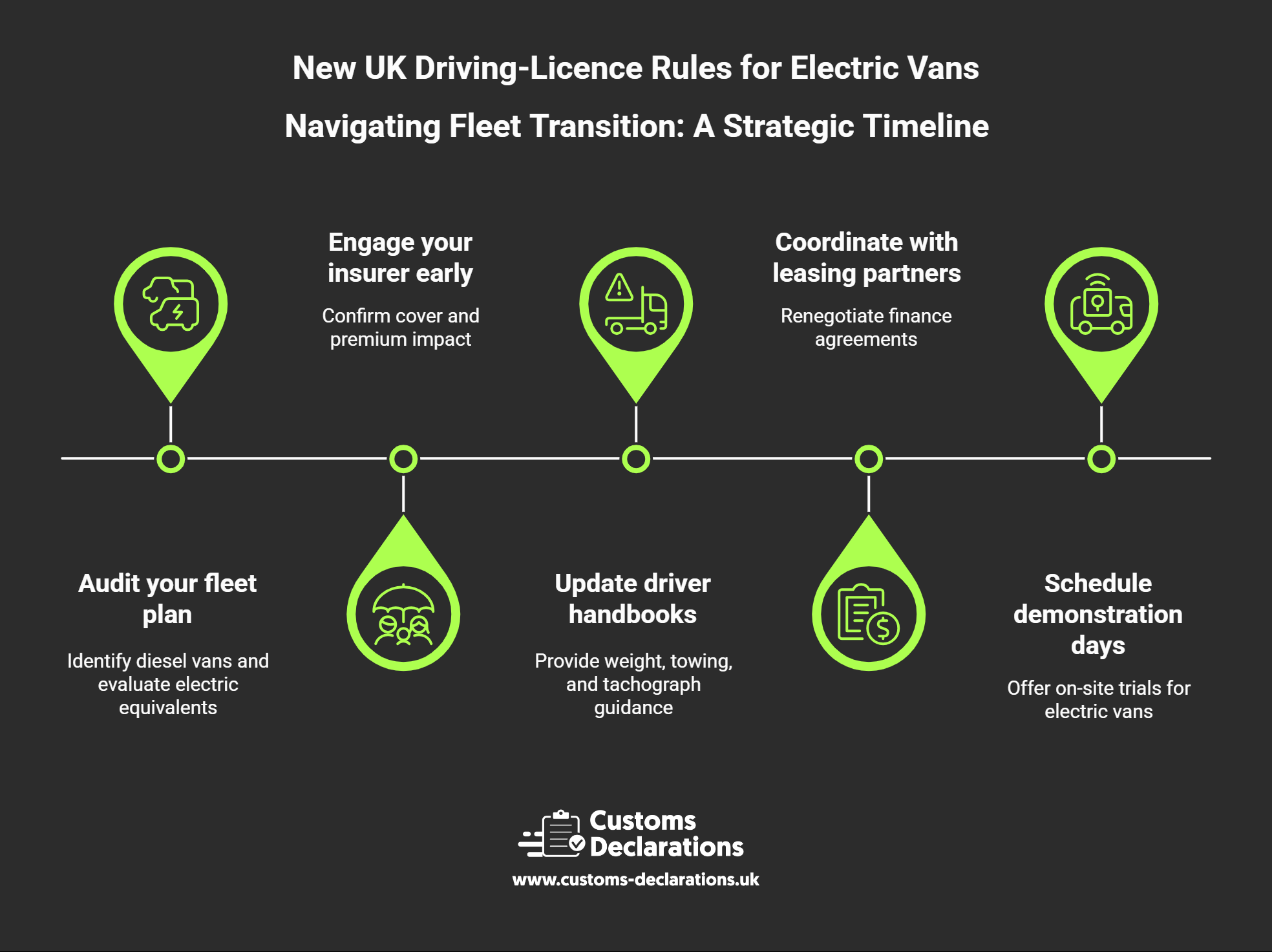Introduction
On 10 June 2025 the United Kingdom rewrote one of the less glamorous but most influential pieces of transport regulation: the weight limit a holder of an ordinary Category B (car) licence may drive when the vehicle is zero-emission. Overnight, the legal ceiling for electric and hydrogen vans rose from 3.5 tonnes to 4.25 tonnes. A mandatory five-hour training course that once stood between many drivers and a larger electric van disappeared. And, for the first time, those heavier zero-emission vans may tow a trailer provided the combined weight of van and trailer does not exceed seven tonnes.
For the lay observer these figures can feel abstract, yet inside parcel depots, supermarket fleets and local-authority workshops the news landed like a thunderclap. The change removes the single biggest licencing barrier to fleet electrification, promises to ease the UK’s chronic driver shortage and gives businesses freedom to choose electric models that can carry useful payload rather than being hobbled by battery weight. This article explains in plain language what has changed, why the government acted, and how companies large and small can make the most of a rule-book finally aligned with the realities of zero-emission technology.



